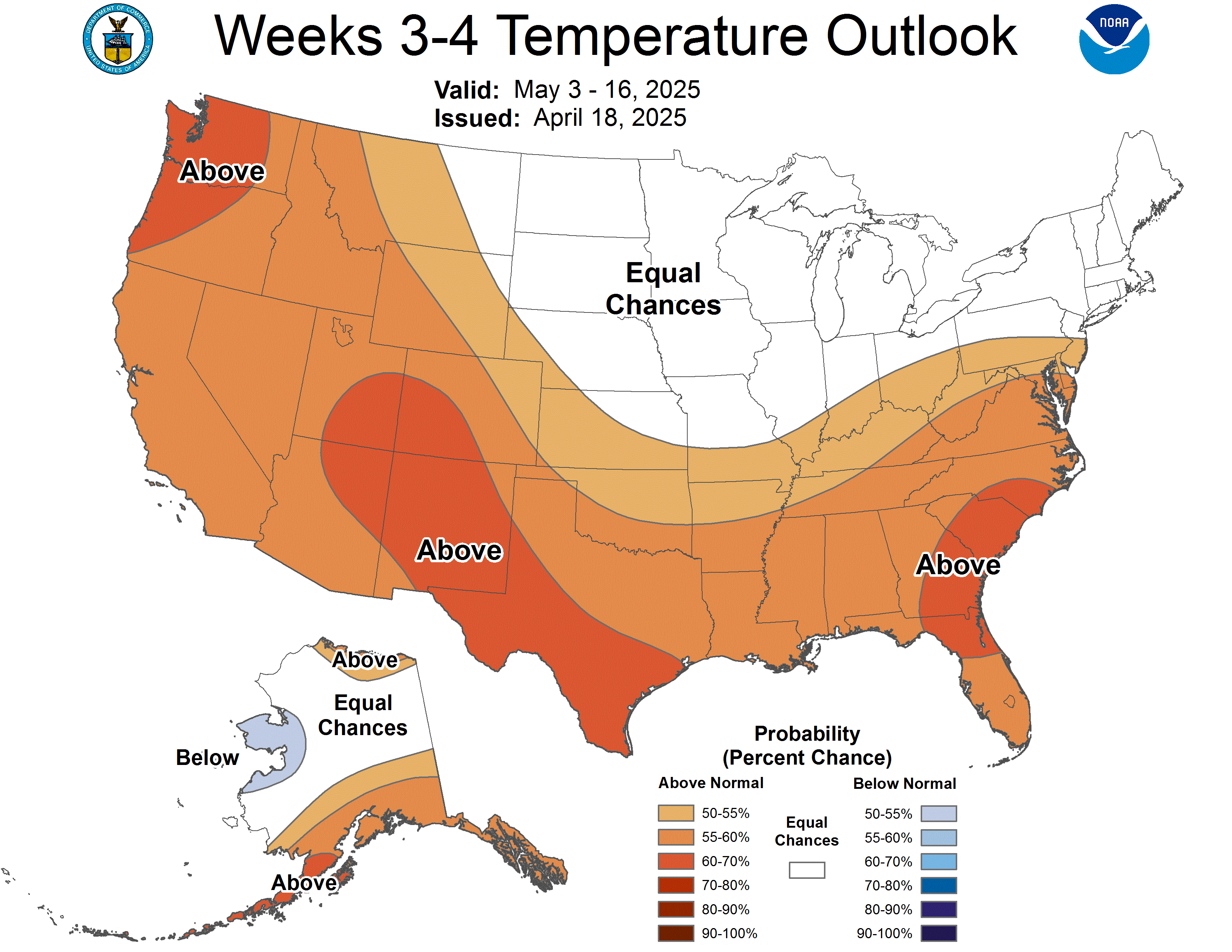#4487 Postby srainhoutx » Fri Jan 25, 2019 3:32 pm
The Climate Prediction Center Outlook for Week 3 and Week 4 suggest ENSO Neutral conditions are likely and a persistent West Coast Ridge and a rather deep trough situated to the East of the Rockies. Interesting to see the CPC suggest colder than normal temperatures across the Southern Plains and above normal rainfall across Southern half of Texas.
Prognostic Discussion for Week 3-4 Temperature and Experimental Precipitation Outlooks
NWS Climate Prediction Center College Park MD
300PM EST Fri Jan 25 2019
Week 3-4 Forecast Discussion Valid Sat Feb 09 2019-Fri Feb 22 2019
ENSO-neutral conditions are currently present over the tropical Pacific Ocean. Equatorial sea surface temperatures (SSTs) are above average across most of the Pacific Ocean. The patterns of convection and winds are mostly near average over the tropical Pacific. The CPC 200-hPa velocity potential based and RMM-based MJO indices indicate the MJO signal quickly propagated east from Africa to the Maritime Continent during mid-January. Dynamical ensemble model forecasts indicate the enhanced phase of the MJO signal progressing east across the West Pacific during the next two weeks. The Week 3-4 temperature and precipitation outlooks rely primarily on dynamical model guidance from the NCEP Climate Forecast System (CFS), ECMWF and JMA operational ensemble prediction systems and the Subseasonal Experiment (SubX), an experimental multi-model ensemble (MME) of both operational and experimental dynamical models as well as statistical model guidance that uses correlations between indices for major modes of climate variability, the Madden-Julian Oscillation (MJO) and El Nino Southern Oscillation (ENSO), and the temperature and precipitation over North America. The potential evolution of climate conditions from forecasts for Week-2 are also considered.
Dynamical model guidance from the various models is broadly consistent, depicting a trough over the Aleutians, while anomalous ridging is forecast over the western CONUS and extending northward through mainland Alaska. Downstream anomalous troughing is anticipated over the eastern CONUS. The ECMWF and JMA ensemble means favor near-normal 500-hPa height anomalies over Hawaii, while the CFS indicates negative 500-hPa height anomalies over Hawaii.
The Week 3-4 temperature outlook indicates increased probabilities of above-normal temperatures for the western half of the CONUS, with the greatest probabilities along the West Coast, supported by dynamical model forecasts, and in particular the SubX MME. Below-normal temperatures are most likely over the eastern half of the CONUS and parts of the Southern Plains, as indicated by the CFS, ECMWF and Subx MME. Anomalous ridging and positive 500-hPa height anomalies increase the chances of above normal temperatures over Alaska, with the greatest probabilities over the southeastern Alaska, consistent with most dynamical model forecasts.
With a mean ridge over western North America in dynamical model forecasts and northerly flow over much of the central and eastern CONUS west of a predicted trough axis, below normal precipitation is most likely over a broad area of the CONUS. Enhanced odds for above normal precipitation are indicated across southern Texas, supported by most dynamical precipitation tools and the Subx MME. Mean troughing over the Aleutian Islands in dynamical model forecasts leads to likely above normal precipitation for much of the southern coast of Alaska and the Alaska Panhandle, supported by precipitation forecasts from the ECMWF and JMA ensembles and the SubX MME.
Probabilistic forecasts from the SubX MME indicate likely above normal temperatures for the southeast islands, and near normal temperatures for the northwest islands. Consensus probability forecasts from the SubX MME indicate below normal precipitation is likely across the Hawaiian Islands, consistent with the low-frequency state over the tropical Pacific.
1 likes
Carla/Alicia/Jerry(In The Eye)/Michelle/Charley/Ivan/Dennis/Katrina/Rita/Wilma/Ike/Harvey
Member: National Weather Association
Wx Infinity Forums
http://wxinfinity.com/index.phpFacebook.com/WeatherInfinity
Twitter @WeatherInfinity
 The posts in this forum are NOT official forecast and should not be used as such. They are just the opinion of the poster and may or may not be backed by sound meteorological data. They are NOT endorsed by any professional institution or
The posts in this forum are NOT official forecast and should not be used as such. They are just the opinion of the poster and may or may not be backed by sound meteorological data. They are NOT endorsed by any professional institution or 














